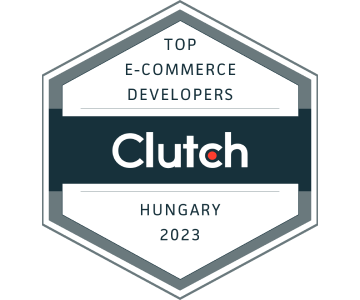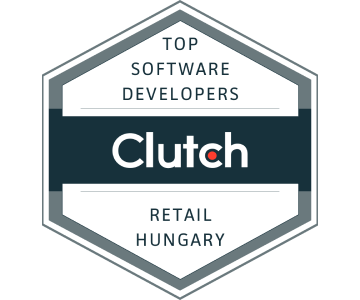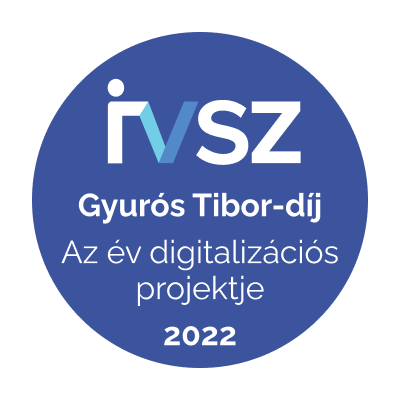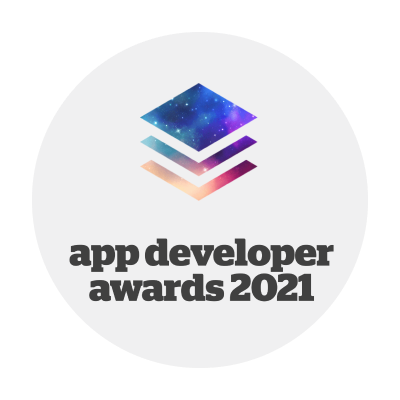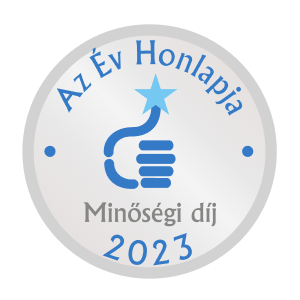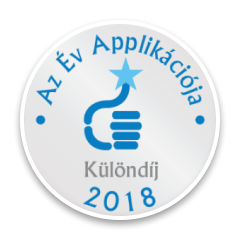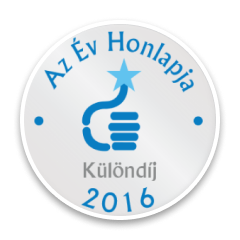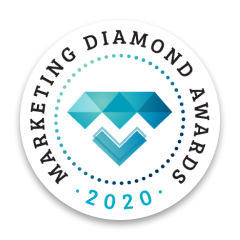Digital product development in up to 12 weeks with an MVP approach
FinTech, HealthTech, GovTech, LegalTech, InsurTech, AgTech and other "EverythingTech" startups aim to enter the market in a short time with a commercially viable solution that already provides value to the customer, operating at MVP (Minimal Viable Product) level, with the right technology and the possibility of continuous improvement in the future. What conditions are necessary for a start-up or even an enterprise company to come up with a quick go-to-market solution that is viable, reliable and can be further developed in the future? In this article, we share our experience in this area.
LogiNet has developed three startups' custom web applications in almost 12 weeks: Instacash and the Tibor Gyurós Award-winning Fair Pay Control in the FinTech sector, and XLab in the HealthTech sector.
"Start-ups play poker, big companies play chess" is the now classic saying of Don Dodge, Google's development consultant, and it sums up the start-up's ambition. An MVP (Minimum Viable Product), which can be assembled in a relatively short time, provides the opportunity to quickly validate an idea that looks good, test it with a target audience and improve it further based on feedback.
To put it simply, an MVP doesn't have to be world-changing, it just needs to provide a possible and workable solution to a practical problem. The market will decide if it needs it.
There are many niches in the market where a good technology solution combined with a conscious business vision can break into. However, it is not a good idea to make the mistake of trying to capture the market with a perfectly engineered product. It is not a question of building a star destroyer, as the MVP is the perfect way to find out whether the market will buy your innovative product or service. And a quick go-to-market can be followed by further development later on, adapted to changing customer needs.
What is needed to ensure that an MVP approach can run smoothly and that the start-up can get up and running as soon as possible? LogiNet had just 12 weeks to implement digital product development projects in the domestic FinTech and HealthTech sectors. Here are some lessons learned that may prove useful for others.
What conditions are required from the customer to start MVP?
1. Established business vision
To enter the market quickly, it is essential that the customer has a good understanding of the market, the target audience, and the business trends and that the product is a good answer to the users' problems and meets their needs. If the innovative idea is accompanied by development project experience on the part of the start-up management, this is an additional positive factor.
2. A well-established business concept, including Service Design validation
Assessing user needs, evaluating customer behaviour and competitors, and creating a roadmap - these are all steps without which an MVP cannot be realised.
Different methods can help to think through the business plan, such as Business Canvas boards, of which there are several types, such as Lean Canvas, which focuses on startups. This makes it easy to create a business model for new or existing businesses.
The business vision can be validated and refined through a Service Design validation, either at the beginning of the project or as a separate concept creation phase before the project. Having this in place will greatly assist the success of the project. The aim is to find out, through validation tests, user interviews and analyses, whether the business concept and the solution itself are fit for purpose.
What are the steps of Service Design?
- During the persona board workshop, we work with the client to develop persona boards with the potential user target groups' possible pain points, fears, motivations, goals, etc. that the service could address.
- User interviews are used to validate and fine-tune the findings on the persona boards.
- Through competitor analysis, we can map and understand the strengths and weaknesses of competitors and analyse in more detail how and what their responses are too specific problems in the competition for customers.
- In the Value Proposition Matrix workshop, the service offered to users will be analysed in terms of the values/solutions it can convey to the user and how this differs from competitors.
- An impact-efficiency matrix will be created to prioritise the different features and create the MVP prototype. The prototype allows user tests to be carried out on it. This is useful because the tests may reveal that, for example, certain functions are not clear to the user or that an unclear interface leads to a stuck user interface. Any errors that occur can then be corrected before the application is ready for use.
- A user journey is created for the functionality defined in the MVP. The journey presents the different steps of using the service in a tabular form.
However, it is worth bearing in mind that it is not possible to come up with a business vision within a 12-week development project. If this is not yet fully outlined, the business vision can be refined through further Service Design activities.
3. Flexibility, willingness to compromise
The client must be aware that a fast start-up requires compromises: not all the features and needs envisaged can be implemented in the first round. You need to decide which features you can let go of in the first step and what will be the backlog, i.e. the tasks left after the launch. The key is for the MVP to focus on a customer problem that it can solve. Startup projects require an agile methodology adapted to their dynamics and fast response times.
Bringing the MVP to market also has the advantage for the customer of being able to see how customers use their product or service, what needs to be changed, what needs further development, and what direction they should take in the future.
4. High-level customer dedication
It is essential to have the right level of dedication on the customer side. During the project, the client has to make several decisions, so the company must put together a team with the right authority and dedication to respond quickly to issues and problems that arise.
5. Ensure a successful project launch from the market side
An application can only make a successful debut if it is supported by the marketing and sales side. The client must have a well-thought-out marketing and sales strategy and concept to ensure that a quick go-to-market will bring success.
What conditions are needed from the developer to ensure the project is completed quickly?
1. A development company with high technological know-how
The developer's professionalism, technological knowledge and experience are essential. It is important that he/she is familiar with technological innovations, can apply them quickly and proposes the most appropriate technology for the client. For example, in the case of mobile app development, you need to decide whether to develop with cross-platform or native technology (iOS/Android), keeping in mind the client's needs. It is also important to involve UX-UI experts in the project from the very beginning.
2. Use of frameworks
Efficiency is important in development, focus on what creates new business value. This is helped by building our software using high-quality off-the-shelf components: for example, during the design phase, developers are given several recurring core elements (e.g. date picker) in the form of modules.
3. Tech lead priority role
The development partner should choose a highly qualified senior developer as the lead, who can make decisions quickly and flexibly on technological and systemic issues.
4. Flexibility of the development company
The development company must be able to quickly assess how the MVP can be implemented, what the scope should be: what the client needs in the first instance and what it does not need, and what can be further developed in the future. Flexibility is also essential: if something needs to change during the project, you can implement it quickly and with a sense of purpose.
5. Continuous flow of information
Keep the client regularly informed about the status of the development, presenting the current situation in weekly standups and sprints.
Specific characteristics of LogiNet FinTech and HealthTech projects
Instacash - a financial startup enterprise solution for end-to-end lending
What customer problem is the solution to?
The process of taking out a loan online is difficult, lengthy and difficult to understand. Relatively few banks are still dealing with it, even though electronic customer identification, and thus online account opening and loan application, was already made possible by legislation introduced in 2017. Instacash's aim was precisely to enable individuals to access as many credit facilities as possible in an end-to-end digital format.
Instacash solution
As a financial startup, they were thinking of developing an enterprise-level product that met the bank's expectations, but at the same time had the flexibility typical of startups. As a pioneer in the domestic fintech sector, they set out to build a digital banking marketplace that would allow customers to complete the entire lending process through the online interface.
Challenges
They needed to rethink the loan application process from a UX perspective, address drop-off points, smooth integration of multiple 3rd party systems, and develop services based on PSD2 guidelines, all in a continuous agile way, using modern technology. It was also important to incorporate security solutions that could pass an MNB audit.
Since the launch of the new online platform, Instacash has been able to help more than 10,000 registrants to apply for credit online. Based on the experience so far, customers are applying for an average loan of HUF 2 million. The simplicity of the loan application process and the quality of the service have been very well received, as shown by the 4.9 out of 5 rating given by more than 1500 customers.
Instacash's own-brand delayed payment service for e-commerce retailers has been recognised by Vodafone Digital Awards 2023.
Fair Pay Control - an automated system for managing receivables
What customer problem is the solution to?
Delayed payments already account for a significant proportion of the domestic economy (around a quarter of invoices are paid late), a situation exacerbated by the pandemic and the current economic situation.
Fair Pay solution
An innovative solution for dealing with receivables has been developed that breaks with traditional methods of debt management and focuses on prevention, with the possibility of immediate legal action if necessary. With a system combining automated invoice management, financial administration and expert legal support, there are no more awkward phone calls, missed payment notices or collapsing cash flow plans.
Challenges
Having developers on both sides, speaking "one language" and already having a well-thought-out idea in the development process helped the Java-based project to be completed. Changing customer needs were also taken into account during development. The possibility to notify partners by SMS in addition to e-mail was integrated, and an instalment payment module was added, which allows instalment payments for certain partners. As this is customer financial data, it needed to be GDPR-compliant and secure.
The Fair Pay receivables management system has been selected as the digitalisation project of the year 2022: the professional jury of the IVSZ awarded the innovative service with the Tibor Gyurós Prize.
XLab - data visualisation for laboratory tests
What customer problem is the solution to?
After a laboratory test, the patient currently finds the result in a PDF sent by e-mail, where he is confronted with unfamiliar words and numbers, while it is not transparent to him whether this means a deterioration or an improvement compared to the previous laboratory result. It is not clear to him whether he should consult a doctor, and if so, which one, so he is likely to start looking for information on the Internet or seek advice from friends and acquaintances, which may lead to a misdiagnosis.
XLab solution
XLab is a home-grown HealthTech startup that was created to enable users to view their lab results digitally, transparently and time-series through a web application, as opposed to the current solution. It was important to make it immediately clear to the user which way the results of the finding had changed. In the application, it is possible to see at a glance how many specimens are in the "good value" category and how many are in the "different value" category, how this differs from the last result, and also to view historical values through a time series chart.
Challenges
The development over approximately 12 weeks has necessitated the creation of an MVP focused exclusively on one area (blood sampling). The next improvements would allow the possibility to request an online opinion from a team of medical experts and book an appointment with a specialist.
From a development perspective, addressing the security of health data throughout the process was a top priority.
Thinking about digital app development, custom web development, fintech, and healthtech startup solutions? As a web development company, we offer a full range of IT services, from design to implementation, operation and support. We can help you develop a digital product tailored to your company's needs. Contact us for a free consultation!

